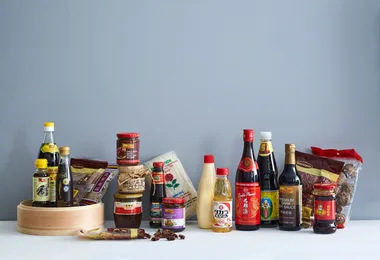Here’s the drill: in the middle of the table there’s a pot of hot, bubbling broth, around which is arranged you and your friends, chopsticks clutched, plunging and dunking whatever you desire from the numerous bowls of raw ingredients surrounding the pot.
The broth varies across regions but in Australia, you’ll mainly see two styles in hotpot restaurants. There’s the red and spicy kind, from the Chinese megacity of Chongqing, known for its ma la, a combination of Sichuan pepper numbness and chilli heat. Then there’s the Cantonese and Thai styles that are more gentle, often made with a chicken stock base. Unlike, say, fondue, there’s not a lot of hard-and-fast rules with hotpot, but saving the noodles for the end, when the broth is well flavoured and needs something to soak it up, is always a good idea. Oh, and don’t wear white. Have at it.
Broth
The cooking medium will depend on the region. The hugely popular spicy Chongqing style broth from Sichuan tradition has a chicken, beef or fish base, seasoned with punchy flavours like garlic, star anise, ginger, soy and, of course, Sichuan peppercorns and a tonne of chilli. Japan’s shabu shabu on the other hand, has a much subtler kombu-based broth, Korea’s jeongol combines a Japanese-style broth with the heat of chilli, Thailand’s suki is flavoured with a sauce made from chilli, garlic, lime and coriander, while Vietnamese hotpots often feature lau, a light, clear broth.
Condiments
Need a little kick with that freshly poached morsel? There’ll be soy sauce, sesame oil, chilli oil or flakes, vinegar, hoisin, garlic, and ginger on the table. And XO sauce is pretty much always a good idea. Beaten egg yolk is sometimes offered as a sauce, too.
Ingredients
Get ready to make some decisions. What you’ll be dunking will depend on the region, but adding heavier, denser ingredients first is usually a good idea, simply because they take longer to cook.
Meatballs Fish, chicken, pork and prawn balls add unique texture. They float to the top when they’re ready.
Greens Ong choy, lettuce, chrysanthemum greens (aka tong hao or tong o), bok choy and cabbage balance out the heavier ingredients and add flavour to the broth, as do fresh herbs.
Seafood Shellfish options vary from prawns to scallops, abalone, crab and oysters. Fish comes sliced, and you may see squid and cuttlefish offered in both fresh and dried forms.
Marinated meats Chicken, pork and beef are all common options, marinated perhaps in soy, chilli and vinegar.
Tofu Firm, silken, puffed, pressed or in sticks – you’ll see it all. The tofu acts like a sponge and soaks up the broth’s goodness.
Noodles You’ll want noodles – perhaps vermicelli, or thicker udon, ho fun or Korea’s japchae, sweet potato noodles. Wontons, dumplings and rice may also be on the table. Add them last.
Sliced meats Sliced thinly so it takes mere moments to cook, meats add a depth of flavour to the broth, while offal brings texture.
Mushrooms All perfect for soaking up that essential broth.
Where to find hotpot
In Melbourne, head to the Dragon Hot Pot restaurants for a choose-your-own-adventure hotpot experience; while Spice World in Sydney brings the fun with wagyu-draped Barbies (yes, the dolls, and yes, wagyu beef) and robot waiters.


